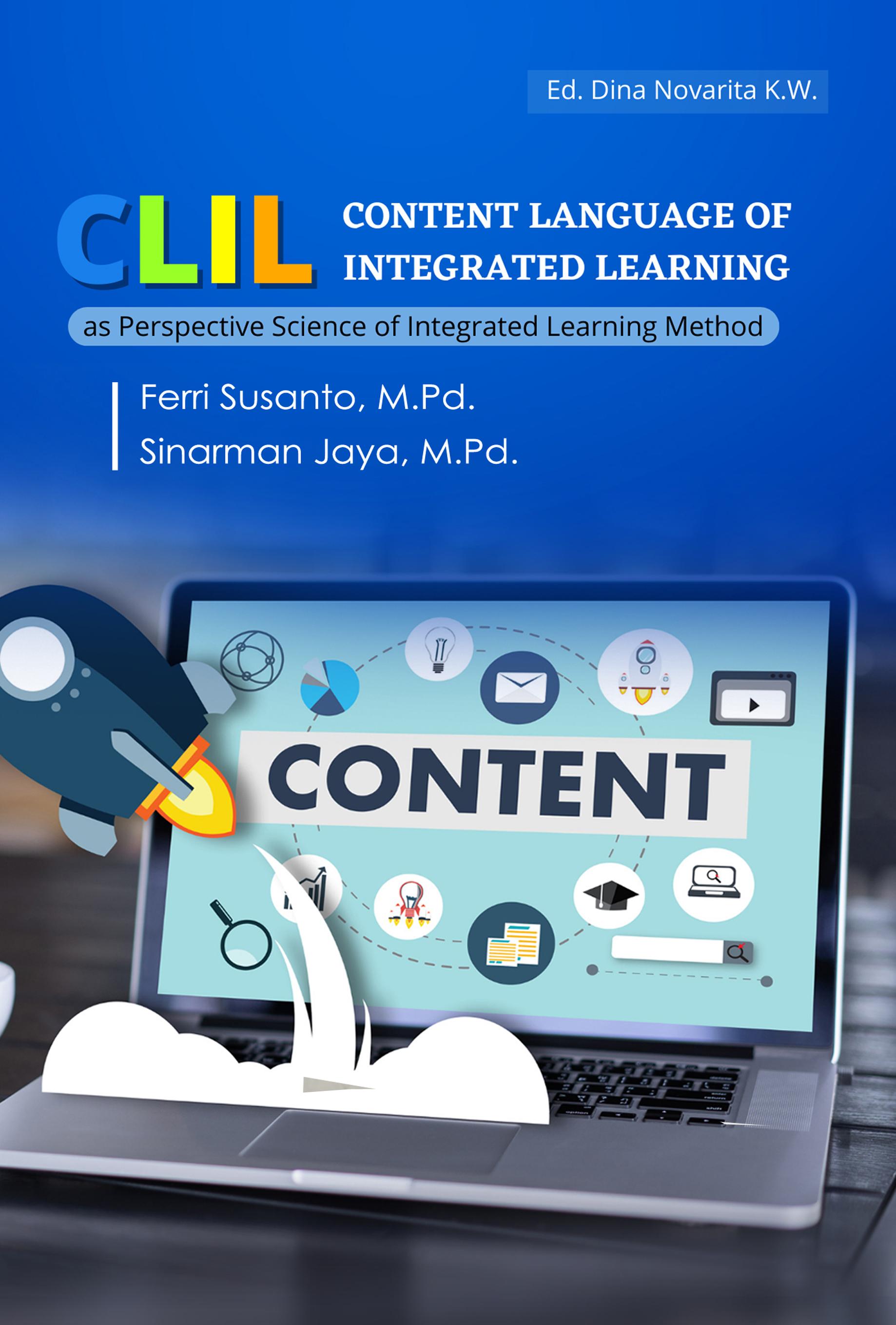CLIL (Content Language of Integrated Learning) as Perspective Science of Integrated Learning Method
Keywords:
CLIL, Learning MethodSynopsis
Why was this book written? It was written to help our students to improve their knowledge about CLIL. It will help them to learn not only the meaning of CLIL but also how they used CLIL as perspective science on integrated learning method. You can use this book either with a lecturer/teacher or for self-study. This is abook about CLIL. Yes, We know, you can tel that from the title. So let us get a bit more specific how to teach and learn that supported by high confident and motivation in order to students will fell comfortable for learning.
Interesting, good style for learning method. CLIL learning is more pleasant experience if you are already familiar with the Content, Communication, Cognition and Culture for learning so you will also feel comfortable expressing yourself in learning. Which leads us to the second reason why the ability to be good learning as opposed to a bad learning, are important for improving learning and teaching ability addition to the repertoire of skill that you have been amassing. You can imagine that, if everytime you comprehend about 4 C, Whether the vehicle of CLIL, when you have something iimportant to do for teaching- or maybe even something for idea how to teach with good style is so important- it is not only satisfying, but also essential that others understand for everything.
ISBN: 978-623-5431-30-7
Referensi:
Ball P., Kelly, K., & Clegg J. (2015). Putting CLIL into Practice. Oxford: Oxford University Press.
Bentley, L. D. (2009). Systems Analysis & Desain Method. New York: McGraw-Hill.
Cinganotto L. (2016). CLIL in Italy: A general overview. Latin American Journal of Content and Language Integrated Learning, 9(2), 374-40
Coyle, Do et al. 2010, CLIL Content Language Integrated Learning, Cambridge: Cambridge University Press
Coyle, D. (2007). ‘Content and Language Integrated Learning: Towards a Connected Research Agenda for CLIL Pedagogies’. International Journal of Bilingual Education and Bilingualism, 10/ 5: 543–562.
Coyle, D. (2011). ‘Post-method Pedagogies: Using a Second or other Language as a Learning Tool in CLIL Settings’. In Y. Ruiz de Zarobe, J. M. Sierra & F. Gallardo del Puerto (Eds), Content and Foreign Language Integrated Learning. Contributions to Multilingualism in European Contexts. Bern: Peter Lang, 49-74.
Coyle, D., Hood, P. & Marsh, D. (2010). CLIL: Content and Language Integrated Learning. Cambridge: Cambridge University Press.
Griva, E. & Kasvikis, K. (2015). ‘CLIL in Primary Education: Possibilities and challenges for developing L2/FL skills, history understanding and cultural awareness’. In Ν. Bakić- Mirić & D. Erkinovich Gaipov (Eds.), Current trends and issues in education: an
international dialogue. Cambridge Scholars Publishing, 125-140
Johnstone, A. H. (2000). Teaching of chemistry - Logical or psychological? Chemistry Education: Research and Practice in Europe, 1(1), 9-15
Lasagabaster, D. (2008): Foreign Language Competence in Content and Language Integrated Learning. In: Open Applied Linguistic Journal, 2008, 1, pp. 31-42.
Ludbrook, Geraldine. 2007. CLIL: The Potential of Multilingual Education. http://www.dosalgarves.com/revistas/N17/3rev17.pdf. Diakses tanggal 10 April 2012
Marsh, D. 2000. Using languages to learn and learning to use languages. Finland: University of Jyvaskyja. [online] Accessed February 10, 2019 from: http://archive.ecml.at/mtp2/clilmatrix/pdf/1uk.pdf
Mehisto, Peter et al. 2008, Uncovering CLIL, Oxford: Macmillan Publishers Limited.
Nikula ,ilari (2007). Neoliberism environmetalism. University of Lapland, 11-13
Nunan, D. 2003. Practical English Language Teaching. New York: McGraw-Hill/Comemporary.

Forthcoming
Series
License

This work is licensed under a Creative Commons Attribution-NonCommercial-ShareAlike 4.0 International License.

















